Student creative
Ellie Jones was one of three Student Creatives in the academic year 2019 / 2020. The aim of the initiative was to offer all students at the AUB an opportunity to create work inspired by the MoDiP collection. This could be in any discipline with any creative outcome from physical art work to film or acting production. The MoDiP collection and / or the museum's practices had to be at the heart of the project and the work needed to be displayed either physically or digitally after a period of 20 weeks. A small bursary was provided to assist with material costs during the project and the remainder was paid on completion.
The resident was expected to keep the MoDiP team updated with progress reports on a regular basis either through email or face-to-face. They were also expected to write three blog posts during the process which follow below. The project not only helped MoDiP work closely with an AUB student, it gave the student a live brief and an opportunity to demonstrate their professional practice beyond their academic requirements.
Ellie's first blog post
I am an MA Illustration student and I am very grateful for the opportunity of working with the MoDiP collection. What first drew my interest was the collection of old photographs from British factories, they are mostly black and white and show an age when plastics became really popular – the 70s, which actually isn’t really that long ago. The people photographed seem full of personality and you can see what era it was by how they have styled their hair and clothing. I feel a personal connection to those people too, as my mother worked in a factory in that time.
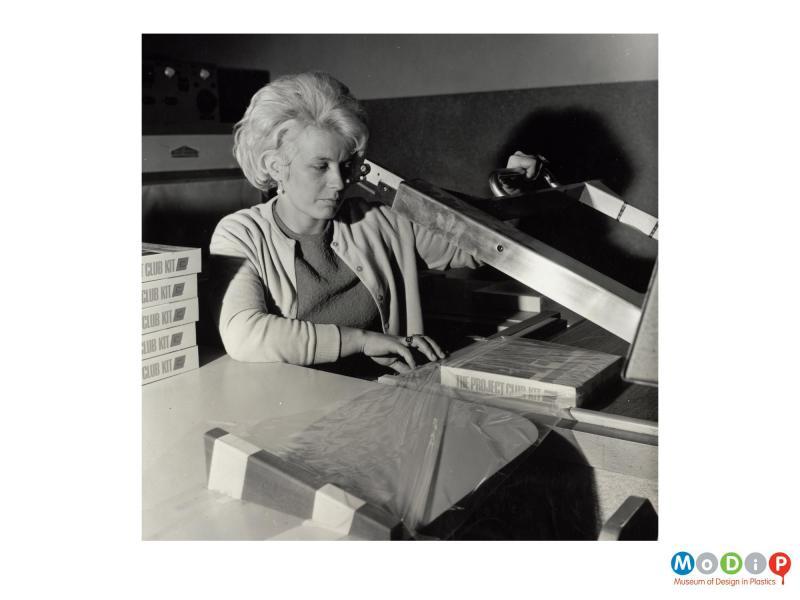
I went to the museum to do some preliminary sketches to gather further ideas and to immerse myself in the museum collection. I found that I was captivated by the transparent clock, and the cicada brooches.


These objects made me think about the layering in plastics. Plastic can be transparent, revealing the workings of machines underneath, and it can be translucent with other colours in it which is beautiful.
So, I’ve been exploring both the photographic elements and transparency/layering in my work, using tracing paper, acetate and paper cutting.


I am going to continue exploring these ideas, and I look forward to seeing where it will lead me!
Ellie's second blog post
I have been continuing to make work with/about MoDiP’s collection of photographs. The museum has a wealth of historical documentation in the photographs of factories that is a part of their enormous collection, and I continue to find myself drawn to them and inspired by them.
I want to show the excitement of the factories around the time that the photographs were taken – in the 60s and 70s, when plastic had just exploded with popularity. The English plastic factories produced so many everyday objects and provided employment for a huge number of people – great grandmas and grandads of many living in this country today. I believe that these factories and the photographs of them have immense historical importance, and I want to use my art to draw attention to them.
I have been using the museum’s collection of objects to inspire me to make the patterns that I have been inserting into the old photographs, by printing copies of them and cutting pieces out.

I am thinking about whether it is more effective to cut out elements of the factory, or to cut out the people. I feel that cutting out the people has negative connotations, but it could be used as a comment on modern factories and the loss of camaraderie as a result of less employees. For me, honouring the people that worked in the factories is important, so I think my focus will be on the objects that the factory workers were helping to make.

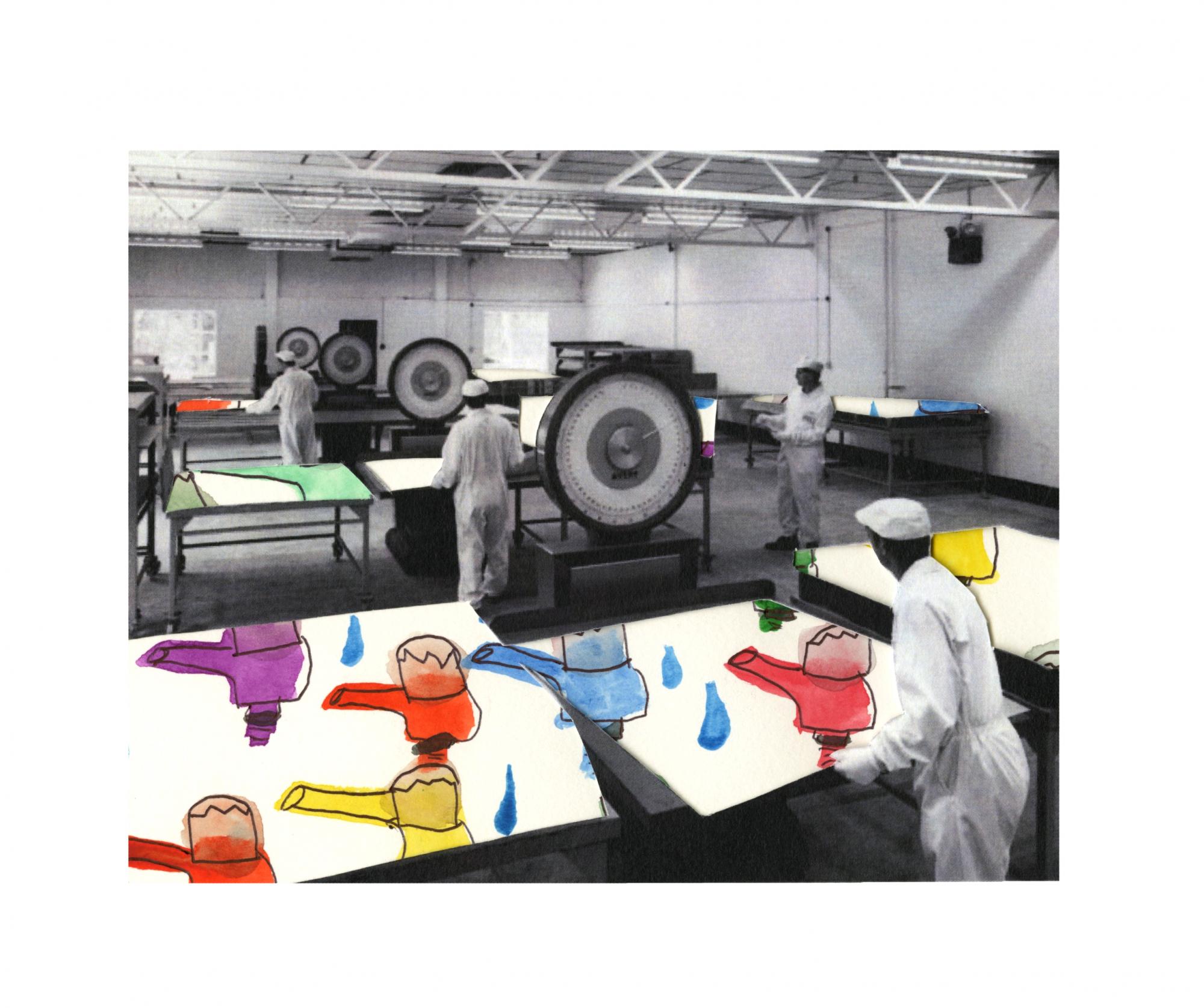
I am going to continue being inspired by MoDiP’s collection of objects and photographs, and I’m excited about what will come out of it!
Ellie's last blog post
My initial inspiration for this project was the large archive of photographs in the MoDiP collection. The majority of them are black and white and show British plastic factories and workers of the 1960’s and 70’s which was a time when there was a massive increase in demand for plastic items. It amazed me how this microcosm of society was captured in such great detail, and what drew my attention the most was the people that worked in these factories, their hairstyles, their choice of clothing - the people behind the plastics.
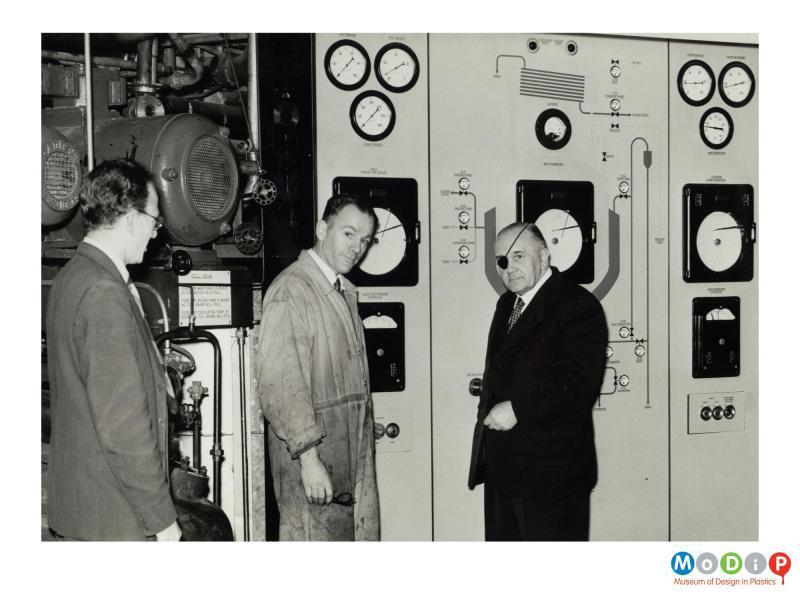
At the same time I was being inspired by the objects in the museum, and I was immediately drawn to the items that had partial transparency or translucency, an interest that I have had since childhood: a curiosity of how things worked. This began my interest in layering in my work.

I wanted to combine my two interests: the archive photographs, transparency and layering. So, I stared to cut into photograph print outs and made watercolour patterns behind them which were inspired by MoDiP objects. The pattern behind the piece below was inspired by the cogs I had seen inside the transparent clock above.

I wanted to use my watercolour paintings to draw attention to the workers, and to express the excitement about plastic that was happening in the time period. These plastic factories were churning out objects that were giving people joy.
I continued to experiment with paper cutting and watercolour, and cut out different subjects to see how that would affect the feel of the piece:
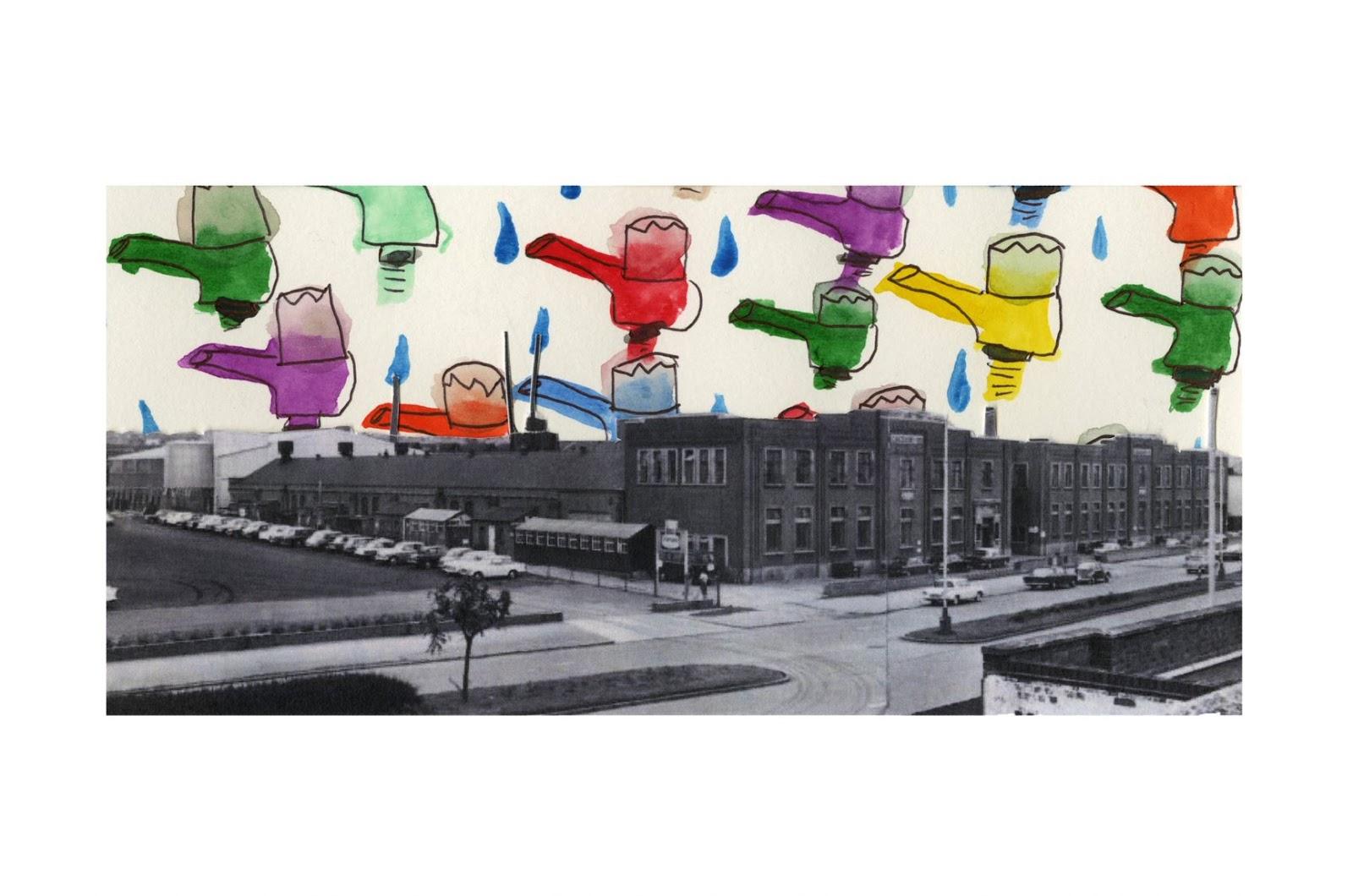
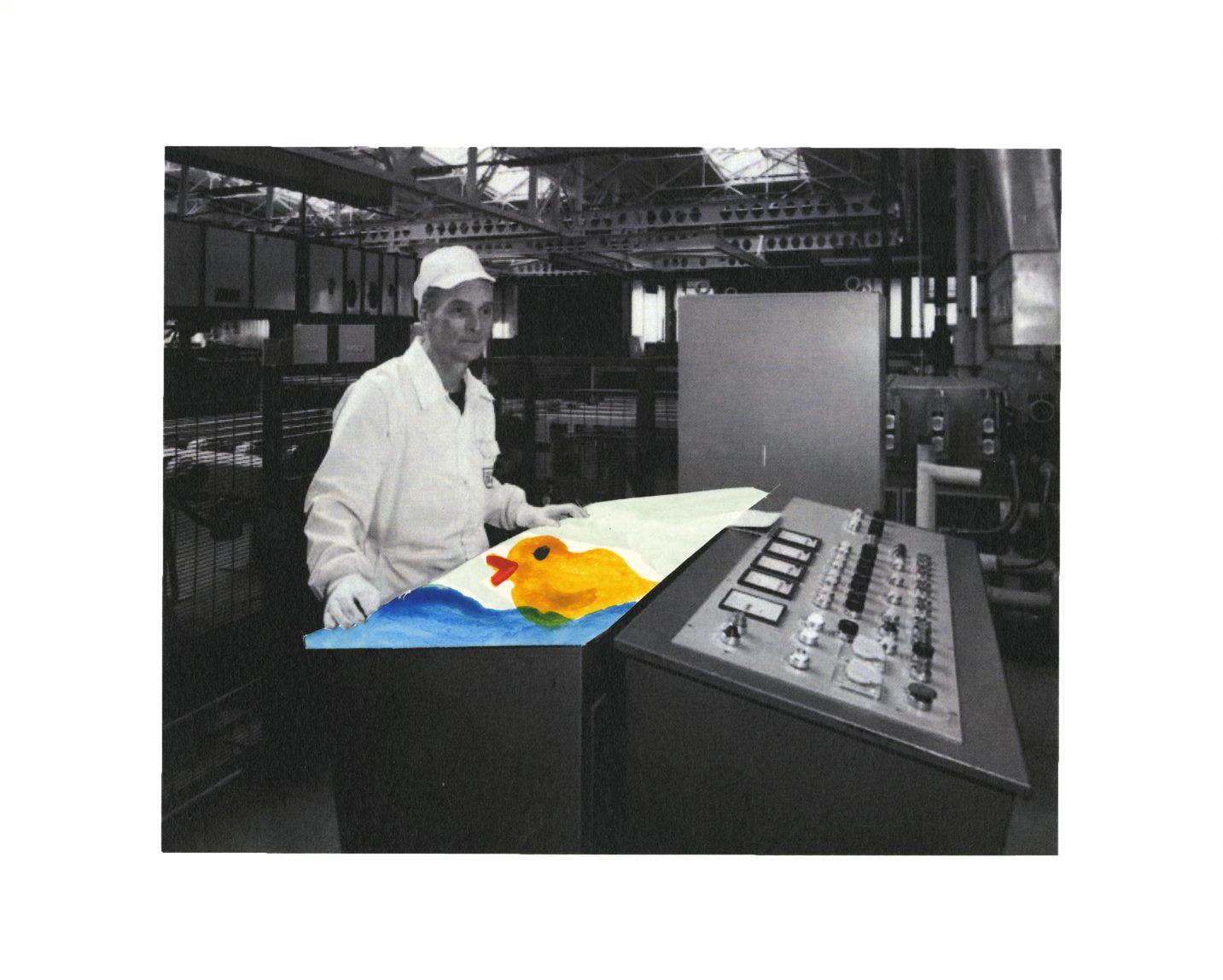
When I made the rubber duck pattern I realised that the use of children’s toys in my work really conveyed the feeling that I wanted. In these factories they were creating items that were exciting and fuelled the imagination for children. Most of us will have had plastic toys when we were children, so I think it’s easy for my work to relate to everyone.
I was still thinking about transparency, and so I experimented with printing the photographs on tracing paper. I also wanted to make my pieces less flat, so I began using foam pads for some of the objects in my patterns.

I still felt that it could be more 3D, so that it would make more of an impact on the viewer. I was inspired by paper theatres and paper cut greeting cards when I made my final pieces for this project:
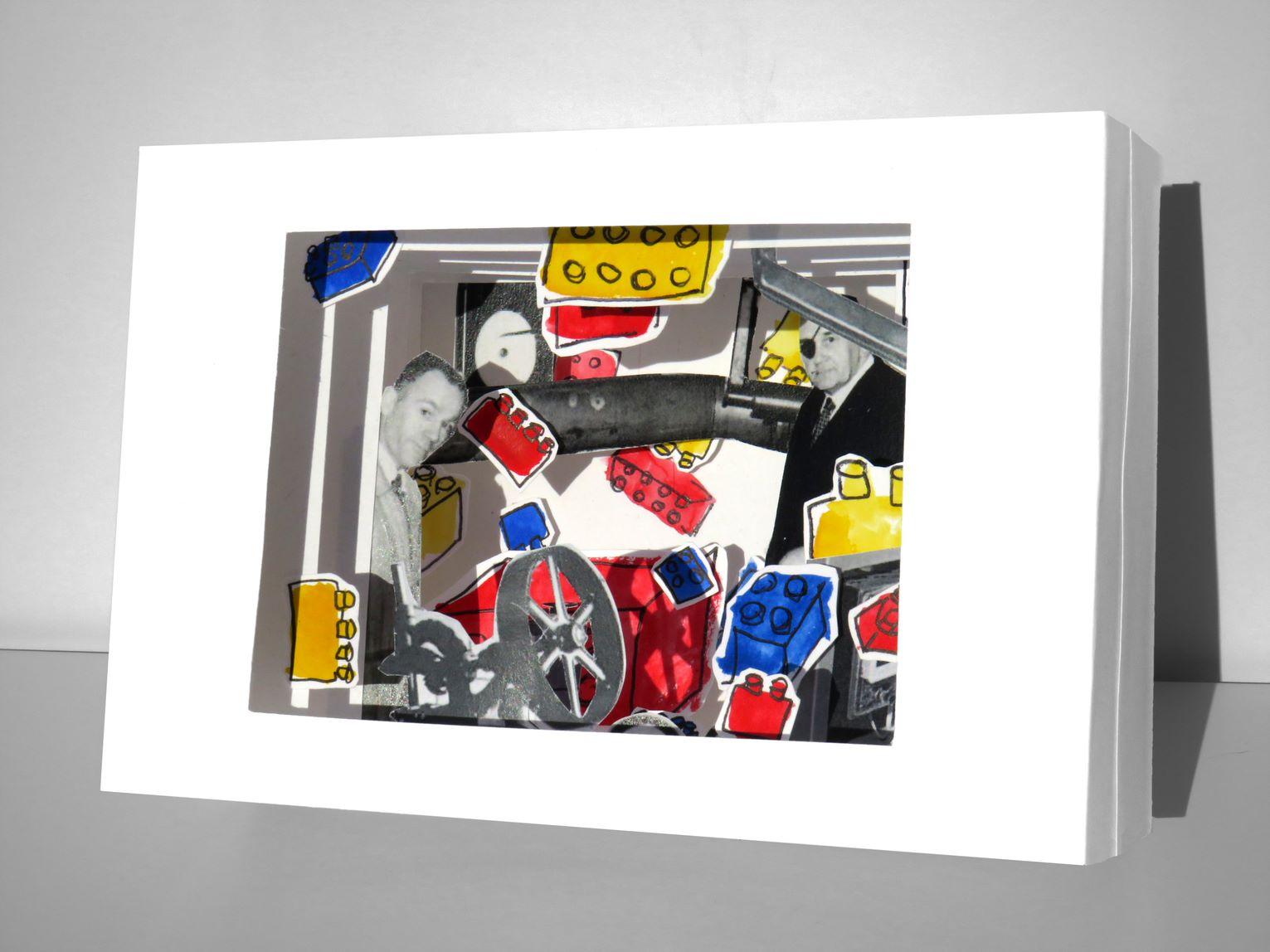
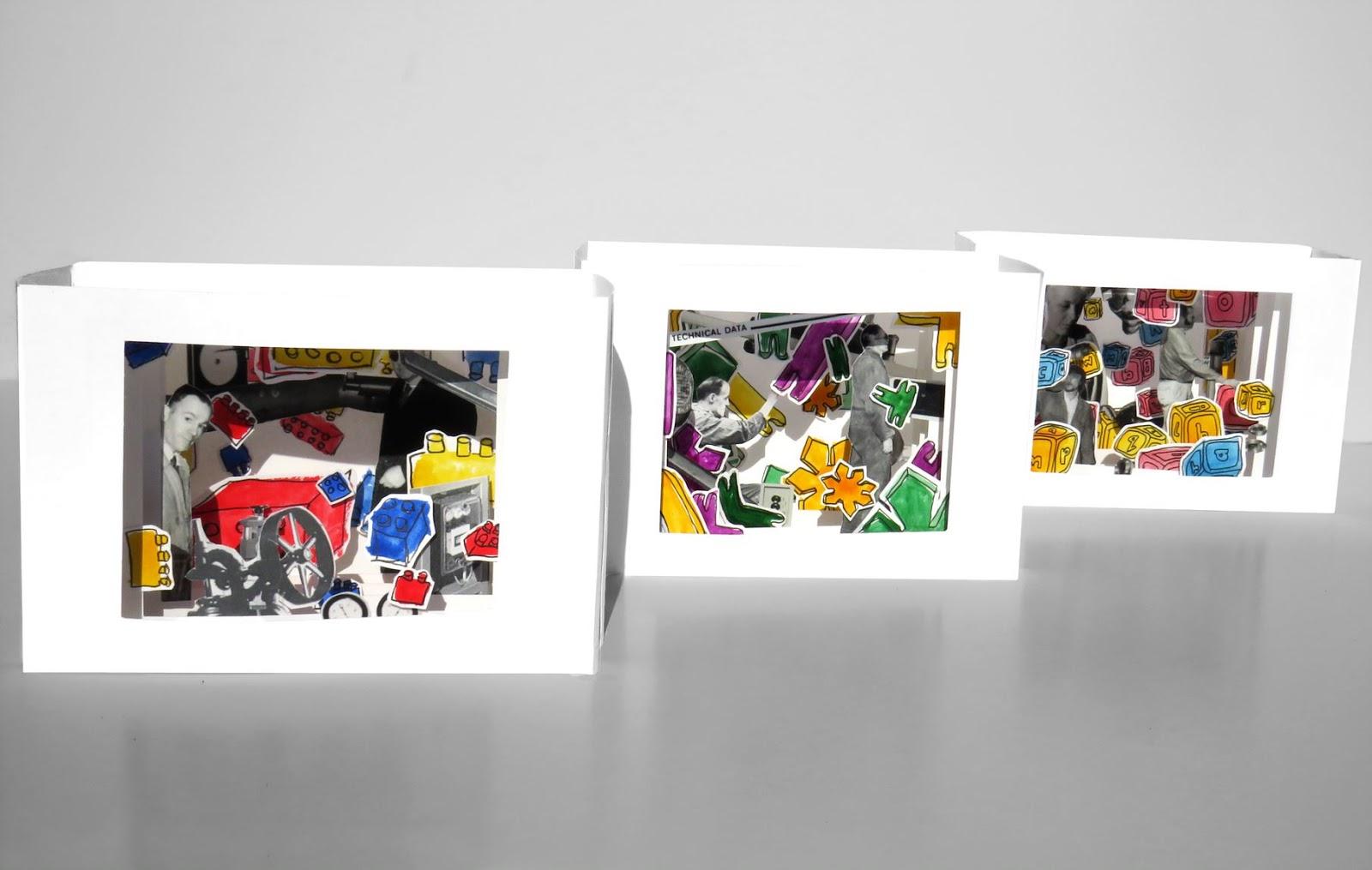
Each one of the three contains watercolour objects that are construction toys that are in the MoDiP archive. I wanted there to be a theme such as construction between the three so that they are all linked, and I used yellow in all three for the same reason. I think that the depth of the work really brings it to life as it becomes its own world, and the viewer can look at them from different angles to access more of the images/paintings. It’s immersive and frantic looking, which is exactly what I was going for!
I am very excited to see my work on display and I am very thankful to the MoDiP team who gave me this opportunity.
